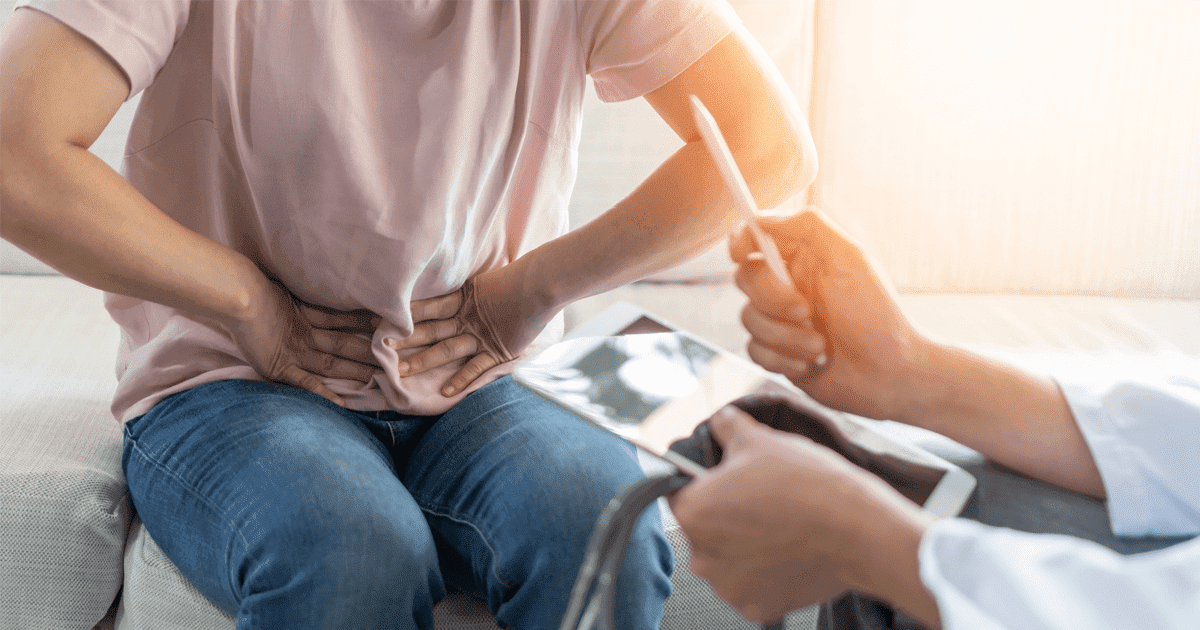Surgical Gastroenterology- Know more about Gallbladder and Gallstones

The gallbladder is an organ that is part of the human biliary system, which is involved with the production, storage and transportation of bile. Bile is a yellowish-brown fluid produced by the liver and used to break up and digest fatty foods in the small intestine.
As gallbladder is a storage organ, there is a tad bit of higher risk of problems occurring if the concentration of bile increases. Some problems associated with the gallbladder are gallstones, gallbladder attack and gallbladder disease.
Here is an excerpt from a video interview of Dr Raja Prasad, Senior Consultant Surgical Gastroenterologist, Omni Hospitals, Kukatpally on Surgical Gastroenterology, the functions of the gallbladder and complications that arise due to a gallstone.
Q. What is gall bladder and what does it do?
A. The gallbladder is an organ that is part of the human biliary system, which is involved with the production, storage and transportation of bile. Bile is a yellowish-brown fluid produced by the liver and used to break up and digest fatty foods in the small intestine.
Q. What are gall stones?
A. As gallbladder is a storage organ, there is a tad bit of higher risk of problems occurring if the concentration of bile increases. Some problems associated with the gallbladder are gallstones, gallbladder attack and gallbladder disease.
Gall stones are of two types,
1. Cholesterol stones and
2. Pigment stones
Cholesterol stones are those stones that occur due to the crystallisation of the cholesterol present in the bile juice while the formation of pigment stones is due to crystallisation of bile pigments that give bile juice the yellowish-brown colour.
Cholesterol stones were initially very common in the western parts of the world, although now even Indian population suffers from these stones due to changes in lifestyle and diet.
Pigment stones are formed when the gall bladder motility is reduced. Obese people are at a higher risk of contracting gall bladder stones due to increased cholesterol levels in their bodies.
Q. Are gall stones dangerous?
A. Gall stones as such are not very dangerous. 70% of the patients who suffer from gall bladder stones are asymptomatic. But 30% of the patients are symptomatic and suffer from pain and discomfort.
Q. What is a biliary tract?
A. A biliary tract serves as a drainage system for the bile juice that is produced in the liver to the intestines where bile juice is required for digestion.
The biliary tract consists of bile ducts that collect bile juice from the left and right side of the liver and unit to form the tract. This collected bile juice is then deposited in the gall bladder where it is stored for some time. When required, the bile juice then flows from the gall bladder to the intestines through the same biliary tract.
Q. Is there a specific age when gall stones are contracted?
A. Gall stones are less common in patients less than 20 years. But children and persons less than 20 years but suffer from any hemolytic diseases are prone to contracting gall stones.
A person beyond 20 years of age is more prone to contract gall stones. Also, the peak time for anyone to suffer from gall bladder stones is between the age of 40-50 years of age.
Q. What are the types of gall stones?
A. Gall stones are of two types,
1. Cholesterol stones and
2. Pigment stones
Cholesterol stones are those stones that occur due to the crystallisation of the cholesterol present in the bile juice while the formation of pigment stones is due to crystallisation of bile pigments that give bile juice the yellowish-brown colour.
Cholesterol stones were initially very common in the western parts of the world, although now even Indian population suffers from these stones due to changes in lifestyle and diet.
Pigment stones are formed when the gall bladder motility is reduced. Obese people are at a higher risk of contracting gall bladder stones due to increased cholesterol levels in their bodies.
Q. Who is more likely to develop gall stones?
A. As gallbladder is a storage organ, there is a tad bit of higher risk of problems occurring if the concentration of bile increases. Some problems associated with the gallbladder are gallstones, gallbladder attack and gallbladder disease.
Obese people and women with multiple children are at a higher risk of contracting gall bladder stones due to increased cholesterol levels in their bodies.
Gall stones are less common in patients less than 20 years. But children and persons less than 20 years but suffer from any hemolytic diseases are prone to contracting gall stones.
A person beyond 20 years of age is more prone to contract gall stones. Also, the peak time for anyone to suffer from gall bladder stones is between the age of 40-50 years of age.
Q. What are the complications of gall stones?
A. The most common complication of gall stones is ‘symptomatic cholelithiasis.’ This means experiencing pain the upper right abdomen, vomiting, gastric discomfort like bloating etc. Some patients also experience spasms. The spasms are caused when the size of the gall bladder stones is big and it obstructs the passage of the bile juice from the gall bladder to intestines. If the position of the gall bladder doesn’t shift after a few hours, then this calls for a surgical emergency.
Q. How does weight affect gall stones?
A. As gallbladder is a storage organ, there is a tad bit of higher risk of problems occurring if the concentration of bile increases. Some problems associated with the gallbladder are gallstones, gallbladder attack and gallbladder disease.
Cholesterol stones are those stones that occur due to the crystallisation of the cholesterol present in the bile juice while the formation of pigment stones is due to crystallisation of bile pigments that give bile juice the yellowish-brown colour.
Cholesterol stones were initially very common in the western parts of the world, although now even Indian population suffers from these stones due to changes in lifestyle and diet.
Obese people and women with multiple children are at a higher risk of contracting gall bladder stones due to increased cholesterol levels in their bodies.
Q. What are the symptoms of gall stones?
A. The most common complication of gall stones is ‘symptomatic cholelithiasis.’ This means experiencing pain the upper right abdomen, vomiting, gastric discomfort like bloating etc. Some patients also experience spasms. The spasms are caused when the size of the gall bladder stones is big and it obstructs the passage of the bile juice from the gall bladder to intestines.
If the position of the gall bladder doesn’t shift after a few hours, then this calls for a surgical emergency.
In a few cases, when the gall stones are big, a patient is also bound to suffer from infections and a perforated gall bladder which also calls for a surgical emergency.
Gall stones also lead to jaundice depending on the patient.
Q. Is there a risk of developing cancer due to bile stones?
A. There is an entity called ‘porcelain gallbladder,’ where along with gallbladder stones there is also a complication with the walls of the organ. (mural walls)
A porcelain gallbladder is a rare disorder in which chronic cholecystitis produces mural calcification.
In these patients, a prophylactic cholecystectomy has been advocated because of its association with gallbladder carcinoma.
Gallbladder carcinoma is often detected at a late stage of the disease, due to lack of early or specific symptoms.
Gallbladder carcinoma has various imaging appearances, ranging from a polypoid intra-luminal lesion to an infiltrating mass replacing the gallbladder, and it may also present as diffuse mural thickening.
Q. What are the causes of gallstones?
A. The gallbladder is an organ that is part of the human biliary system, which is involved with the production, storage and transportation of bile. Bile is a yellowish-brown fluid produced by the liver and used to break up and digest fatty foods in the small intestine.
Gall stones are of two types,
1. Cholesterol stones and
2. Pigment stones
Cholesterol stones are those stones that occur due to the crystallisation of the cholesterol present in the bile juice while the formation of pigment stones is due to crystallisation of bile pigments that give bile juice the yellowish-brown colour.
Cholesterol stones were initially very common in the western parts of the world, although now even Indian population suffers from these stones due to changes in lifestyle and diet.
Pigment stones are formed when the gall bladder motility is reduced. Obese people are at a higher risk of contracting gall bladder stones due to increased cholesterol levels in their bodies.
Some people also contract gall stones due to different genetic disorders.
Irrespective of the causes of gallstones, the symptoms and treatment will remain the same.
Q. Is vigorous weight loss a reason by which people contract gallbladder stones?
A. Yes, vigorous weight loss is a reason to contract gallbladder stones.
Q. Do gallstones dissolve by themselves?
A. The best treatment for gallbladder stones is the removal of the gallbladder. But there are a lot of people who are sceptical and hence only ask for medical management.
There are some medications which dissolve the size of the stones gradually and also control their size. But the chances of gallstones occurring after using stopping this medication is about 50-60%. The medication has to be taken for a period of 6-12 months and sometimes the stones don’t disappear completely but only reduce in size.
Prolonged medication can also lead to a lot of side effects. Further, medication can only be prescribed to patients whose gallstone size ranged from 2-3mm.
Q. What is the difference between gallstones and kidney stones?
A. The main difference between gallstones and kidney stones is:
1. Kidney stones are formed in the urinary system of the kidney while gallstones are formed in the gallbladder.
2. Kidney stones are mostly calcific stones while only 10% of gallbladder stones are calcific in nature.
3. When there is an occurrence of gallbladder stones, attempts are made to remove the gallbladder whereas when it comes to kidney stones, attempts are only made to remove the stones in the kidney as the kidney is very essential for the normal functioning of a human behind unlike gallbladder.
Therefore, the location, causes, symptoms and treatment for gallstones and kidney stones are very different.
Q. In general people make an assumption that after undergoing a surgery for gallstones, there is a chance of suffering from diabetes. Is this true?
A. There is no relation or effect between gallbladder surgery and diabetes. They don’t go hand in hand.
Diabetes can probably cause gallbladder stones but not otherwise.
Q. Is gallbladder necessary for the normal functioning of a human body?
A. The gallbladder is a small organ located on the underside of the liver. Its primary purpose is bile storage. The liver makes bile, a substance that helps the body break down and absorb fats. The gallbladder then stores the extra bile the liver makes. It releases bile when you eat a meal with fats that need to be digested.
Normal digestion is possible without a gallbladder. Bile will continue to reach your small intestine, but it just won’t be stored along the way in the gallbladder.
Hence, the gallbladder is a vestigial organ in humans and doesn’t necessarily contribute to the normal functioning of the human body.
Q. What are the preventive measures one can take to avoid the occurrence of gallstones?
A. As one reason for the appearing of gallstones is cholesterol, practising a balanced lifestyle and diet is one way in which gallstones can be kept at bay.
Regular exercising can also be helpful in a lot of ways.

Sr. consultant – Dept. of minimal access and Surgical Gastroenterology
